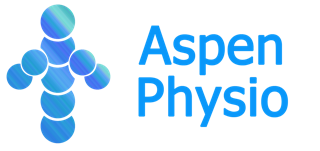Yes it’s absolutely true; we experience and feel pain in our brains 100% of the time, In other words you need a brain to feel pain. For many people this statement can literally be quite difficult to ‘get your head around’. ‘Okay then, how come I feel the pain in my back, neck, leg, arm etc’? I’ve been asked this many times over the years so I’d like to try and explain this and mention a few other facts about pain. Many people have found that understanding pain a little is both helpful towards their own and other people’s pain and also in choosing appropriate treatment or therapy.
Is it surprising to learn that orthodox medicine and alternative therapies, knew virtually nothing about pain until around 15-years ago? Many theories about pain were proposed before this time but unfortunately these were not based on any scientific facts (none existed) and they all turned out to be incorrect. This uncertainty and complete dearth of knowledge about pain contributed to different schools of thought about injuries and pain, these thoughts were subsequently developed into therapies, many of which are still around today. Some of these philosophies and theories often differed greatly between one another and as such, different therapists could provide different diagnoses for the same problem experienced by the same patient. Thus a diagnosis of the cause of a patient’s back pain may be different if they see a chiropractor when compared to an osteopath in contrast to the diagnosis arrived at by a doctor or physiotherapist and so on. In other words the cause of the pain is the same but the diagnoses differed depending on the training and background of the practitioner.
Despite this obvious lack of scientific knowledge a plethora of therapeutic approaches to treating pain as diverse as surgery, drugs, rest, joint manipulation, massage, biomedical devices and faith healing etc emerged during this time. However, when subjected to the rigors of scientific research these treatment approaches have performed at best modestly and often disastrously in clinical trials. We have also subsequently discovered that many treatments effective in relieving pain for some people are often providing pain relief for reasons quite different to the original theories proposed by the originators and practitioners of these therapies. Good examples can be drawn from the manual (‘hands on’) therapies where traditional concepts proposed that spinal joints moved ‘out of position’ (sometimes referred to as ‘subluxations’) causing pain as well as many other health problems and that these joints could be manipulated back into position. We now know through the advancement of diagnostic imaging techniques such as CT and MRI scanning that outside of exceptional circumstances these spinal joints do not move out of place, nor does manipulation ‘pop’ them back in again. The exceptional circumstances I refer to here would be massive spinal trauma such as that sustained in catastrophic road traffic accidents. In these circumstances people find themselves on spinal boards in accident & emergency departments and not on doctors or therapists treatment coaches. Similarly it was thought in some quarters that bulging,/prolapsed or ‘slipped discs’ in the spine could be manipulated ‘back into place’, we now know that this doesn’t happen. Incidentally, the often dramatic cracking or popping sound associated with spinal manipulation is simply the sound of gases rapidly shifting position within the joint, this is the same phenomenon as when someone ‘cracks’ their knuckles.
Overall, it is true to say that we have learnt more about pain in the last 10-15 years than in the entire history of medicine that preceded this, but pain is complex, much more complex than previously thought!
How did we work out that we feel pain in the brain and not in the body part containing the pain (i.e. leg, arm or discs in our spine etc)? It seems logical to assume that pain is coming from the part of the body where we feel it. Yes, medicine thought that too until recently. Not only that but many treatments available for pain today are based on this concept but this concept is fatally flawed. If it were true then treating repairing or removing the injured, damaged or diseased tissues (bone, muscle, ligaments, discs, cartilage etc) that hurt should always resolve the pain associated with these tissues without exception. This would especially be the case if the offending tissue or body part was completely removed surgically. How can tissues hurt if they are not even there any more? Unfortunately, and often tragically many people do continue to feel pain in these areas after treatment and even in parts of the body such as legs, feet, arms and hands that have been amputated and are physically not there anymore. This phenomenon is referred to as ‘phantom limb pain’ and the phantom is in the brain.
Bear with me through a little bit of pain science and hopefully things should become clearer. Nerve signals in the form of electrical impulses arrive at the brain via the spinal cord, these signals usually originate in the tissues of the body when these tissues undergo intense, threatening or noxious stimulation from mechanical forces (stretch, pressure, tearing) or chemical release due to inflammation and bleeding as well as stimulation from thermal agents that heat, burn, cool or freeze tissues.

